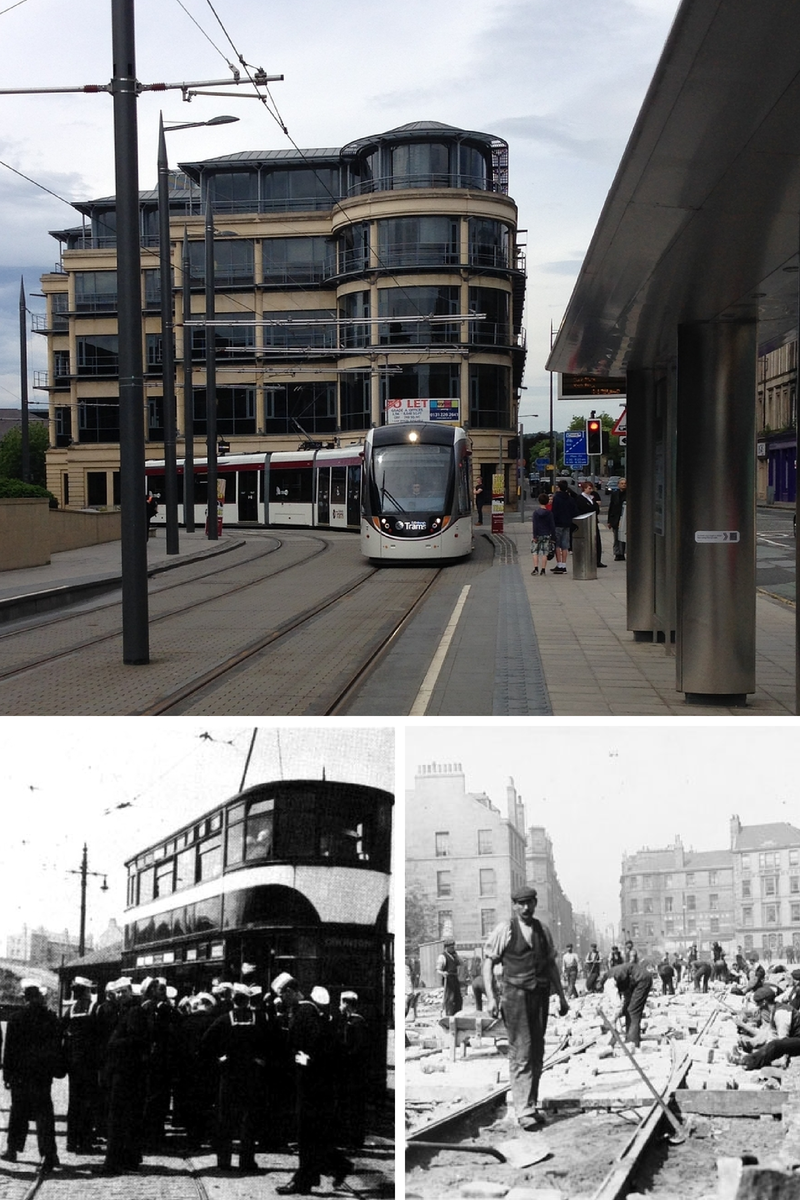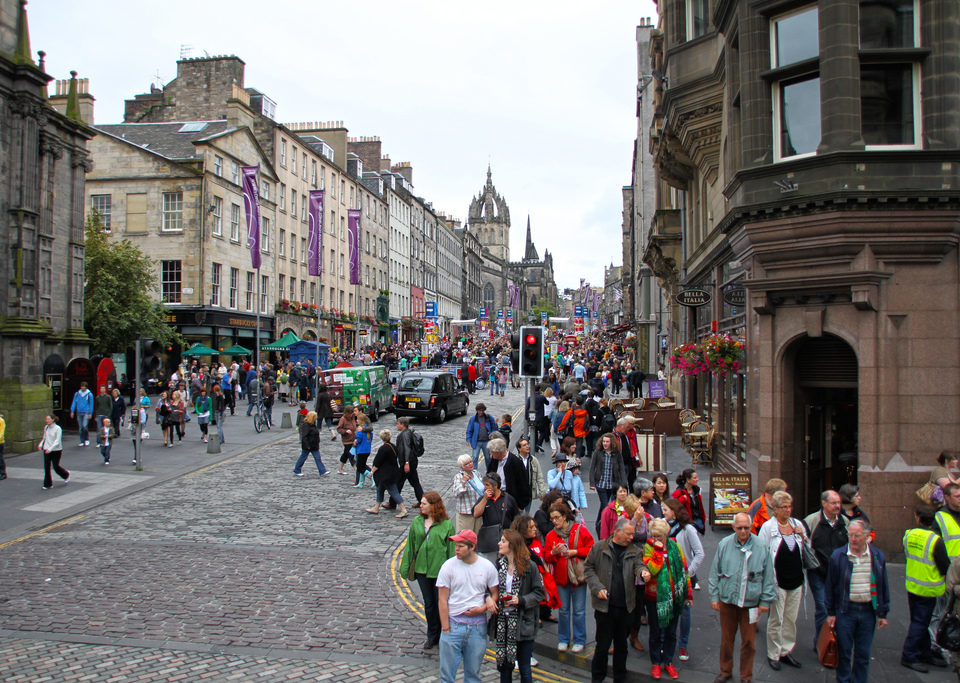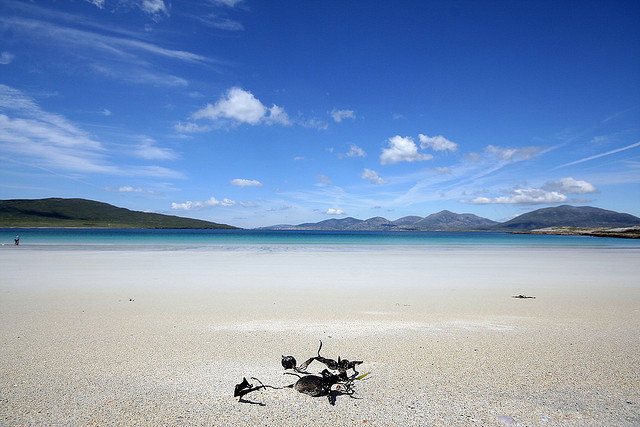Edinburgh Trams
Trams return to Edinburgh Streets
 On November 6 1871, Edinburgh Corporation Tramways ran the very first tram service (or streetcars as they’re called in America) from Haymarket to Bernard Street. Trams have been seen through various progressions of technology- the first trams were horse-drawn vehicles that ran along tracks; these were replaced by cable-hauled trams (also called cable cars) from 1888. There is still a remnant of the old cable-hauled tramway at the East End of Princes Street. Electric trams arrived in 1905, and the famous double-deckered trams, painted dark red and white (colours still used by Lothian Buses today) served Edinburgh until 1956 when the tramway closed. Since then, the most popular transport in Britain has been buses and trains, though towards the end of the 20th century there was revived interest in trams and new networks were introduced in places like Birmingham, Croydon and the midlands. A plan to build a tramline along Princes Street and Leith Walk (the longest street in Edinburgh) was proposed in 1999, and the very first tram testing along the full line (operating only from York Place in New Town and Edinburgh Airport) began in December of 2013. These trams have been specially designed to cater for wheelchair users and prams with low entrances throughout. The tramway opened to passengers on 31 May 2014, with the very first tram setting off at 5.30am. It has seen 40000 customers in the first weekend, all keen to share a historic and long awaited moment. News that the tram system is finally up and running has hit headlines all over the world, making it in to news reports in Ireland, the United States and Singapore. Edinburgh city’s population of almost half a million is growing and forecast to rise by more than 55,000 people by 2030, creating a real need for additional public transport. A UK government report highlights that the trams improve the quality and attractiveness of public transport in Edinburgh which will in turn promote local economic growth and also reduce carbon emissions.
On November 6 1871, Edinburgh Corporation Tramways ran the very first tram service (or streetcars as they’re called in America) from Haymarket to Bernard Street. Trams have been seen through various progressions of technology- the first trams were horse-drawn vehicles that ran along tracks; these were replaced by cable-hauled trams (also called cable cars) from 1888. There is still a remnant of the old cable-hauled tramway at the East End of Princes Street. Electric trams arrived in 1905, and the famous double-deckered trams, painted dark red and white (colours still used by Lothian Buses today) served Edinburgh until 1956 when the tramway closed. Since then, the most popular transport in Britain has been buses and trains, though towards the end of the 20th century there was revived interest in trams and new networks were introduced in places like Birmingham, Croydon and the midlands. A plan to build a tramline along Princes Street and Leith Walk (the longest street in Edinburgh) was proposed in 1999, and the very first tram testing along the full line (operating only from York Place in New Town and Edinburgh Airport) began in December of 2013. These trams have been specially designed to cater for wheelchair users and prams with low entrances throughout. The tramway opened to passengers on 31 May 2014, with the very first tram setting off at 5.30am. It has seen 40000 customers in the first weekend, all keen to share a historic and long awaited moment. News that the tram system is finally up and running has hit headlines all over the world, making it in to news reports in Ireland, the United States and Singapore. Edinburgh city’s population of almost half a million is growing and forecast to rise by more than 55,000 people by 2030, creating a real need for additional public transport. A UK government report highlights that the trams improve the quality and attractiveness of public transport in Edinburgh which will in turn promote local economic growth and also reduce carbon emissions.






